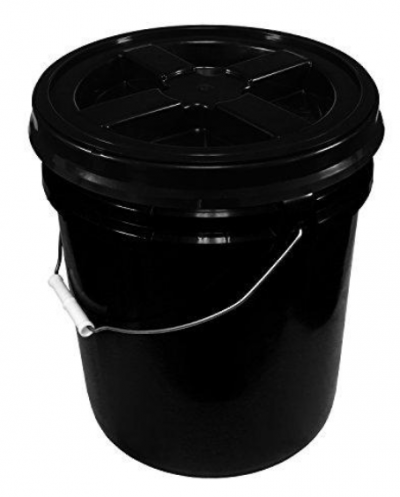How to Make an Emergency Food Bucket
Morgan Rogue 08.24.22

Nobody wants to think about bad case scenarios, but in fact, being prepared and ready for those worst case scenarios will ease your mind and empower you to take on whatever may come your way.
By creating an emergency food bucket, you’re taking control of your future by having some food security.
What is an emergency food bucket?

Essentially, it’s a 5 gallon bucket full of food to last you and your family for anywhere from 24 hours to 72 hours. The idea is, this bucket is ready to go in case you need to leave your home. It’s an extra bit of food that you can grab and throw into the vehicle as you’re evacuating your home.
You may also use this emergency food bucket for home purposes. If an emergency happens, you are more than welcome to use the contents of this bucket. It’s there for your emergency needs, that even includes job loss.
It could also be a good idea as a gift to friends who you want to help get prepared. This is a great introductory into preparedness. They have a small stash of food that they can rely on for any disaster.
Whatever you need the food for, it’s there.
I will say, I highly recommend getting a gamma lid for your emergency food buckets so they’re easy to open and close without any hassle from a typical paint bucket lid.
What type of food is inside of an emergency food bucket?

You can place whatever type of food inside that you’d like and it can last for however long you’d like, or however much will fit. You can place canned foods, ready to eat foods like snacks or boat rations, freeze dried foods, MREs, even your own homemade dehydrated. They can be placed in mylar or vacuum sealed for an even longer extended shelf life.
I would suggest placing a variety of food inside to take care of breakfast, lunch, dinner and snack needs for the entire family.
How many emergency buckets of food do I need?
This is completely up to you, your budget, your family size, what you’re evacuating for and how long you might be gone for. You may want a couple buckets and that’s perfectly fine, too.
Where should I store this bucket?
This can be stored near your bug out bags, in a closet near the front door or anywhere else that would be easily accessible to grab and go whenever you need it.
How should I inventory?
Write down the contents of the bucket and tape it to the outside. Rotate as needed.
Don’t forget the water!

Buckets aren’t ideal storage for water, so try to keep a case or a few gallons of water next to the bucket so you can remember to grab the water in addition to the food. You should have enough water to cover any freeze dried or dehydrated meals, as well as for general drinking purposes.
You may, though, want to place a small water purification device inside of the food bucket, or one of your bug out bags or your vehicle, depending on your emergency disaster plans.
Have fun!
Make this bucket fit you and your household food needs. It should include foods that you and your family regularly eat. We don’t want to shock everyone with MRE chili when nobody normally eats chili. An emergency is not the time to change everyones diets, it’s a time to make sure everyone is properly taken care of.
Have fun with it, get the whole family involved and stay prepared!

